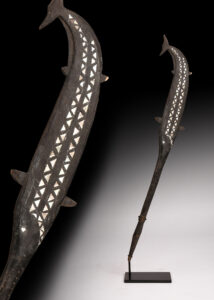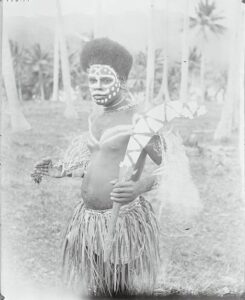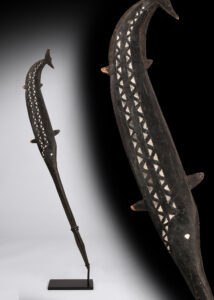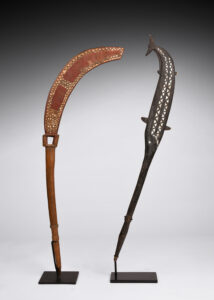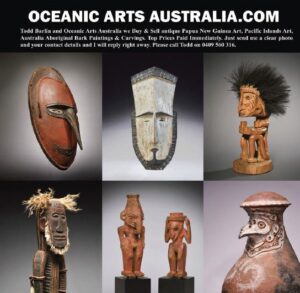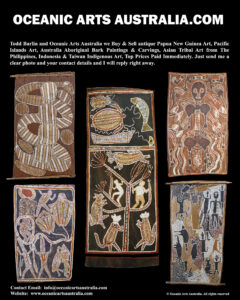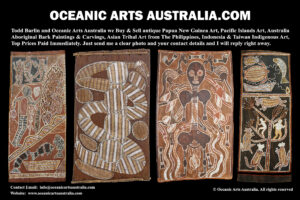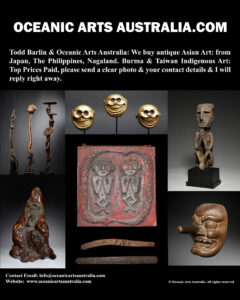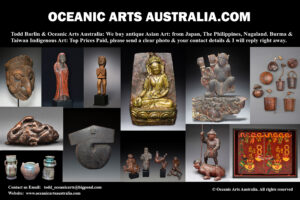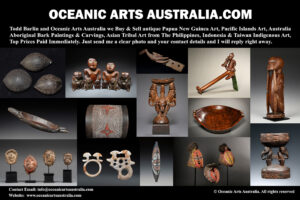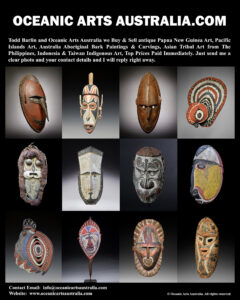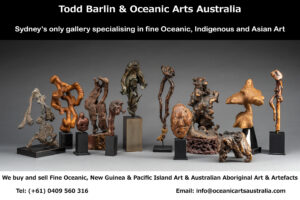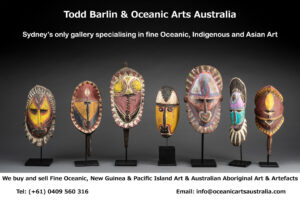A Fine Old Solomon Islands Dance Wand Makira Island San Cristóbal Eastern Solomon Islands
| Collection No. | Old Dance Wand Makira Island San Cristóbal Eastern Solomon Islands |
|---|---|
| Size | 90cm |
A Fine Old Solomon Islands Dance Wand Makira Island San Cristóbal Eastern Solomon Islands Dating from the early 20th Century
Dance Wands of various forms were used in Makira Island (also called San Cristobal) South Malaita Island and the small Islands of Santa Ana, Santa Catalina, Ugi, Ulawa
Ceremonial dances are performed often annually but also during the initiation of young men to adulthood.
This Dance Wand is in the form of a fish and was used in dances that enact Bonito Fishing, the curved form represents the prow of a bonito canoe and is used to imitate the movement of the canoe. This beautiful example has finely worked triangular-shaped shell inlays on both sides of the fish.
The Solomon Islands in the southwest Pacific form a double chain, roughly 850 miles long, between New Britain and Vanuatu. The archipelago is remarkable for the richness of its decorative arts, which serve to adorn the human body and embellish ceremonial and utilitarian objects. Solomon Islanders are particularly remarkable for their sophisticated traditions of shell inlay, in which delicately carved sections of mother-of-pearl or white shell are inset into the surfaces of wood objects as shown in this very fine sculpture.
In the Southeast Solomon’s Sacred Canoe Houses held all of the most important ceremonial objects & ancestral remains in fish-shaped coffins.
Crispin Howarth at The National Gallery of Australia in his superb publication & exhibition at the NGA VARILAKU: Pacific Islands Art from the Solomon Islands 2011 states
” Large sculptures of bonito fish (Katsuwonus pelamis) hung from the rafters inside ceremonial canoe-houses along with carvings of sharks and people, and trophies of fish skeletons leftover from feasts. Bonito are scaleless, smooth-skinned fish copiously filled with red blood similar to that of people. So close are the connections between bonito and people that one part of the maraufu or malaohu initiation ceremonies included the flowing of blood from the bonito into the mouth of initiates.
Bonito Fish are very difficult to catch and could only be caught when their protective deities wished them to be caught; their seasonal arrival signified the start of initiation events and the sharing of traditional knowledge. Sculptures of Bonito and Frigate Birds were taken out of the canoe house and attached to decorated platforms erected on the shore, facing out to sea, for ceremonial performances where Dance Wands like this were used”
Provenance: The Todd Barlin Collection of Solomon Islands Oceanic Art
To see many more rare items and the finest masterpieces, please make an appointment with us to visit the gallery.
For all inquiries, please contact us

